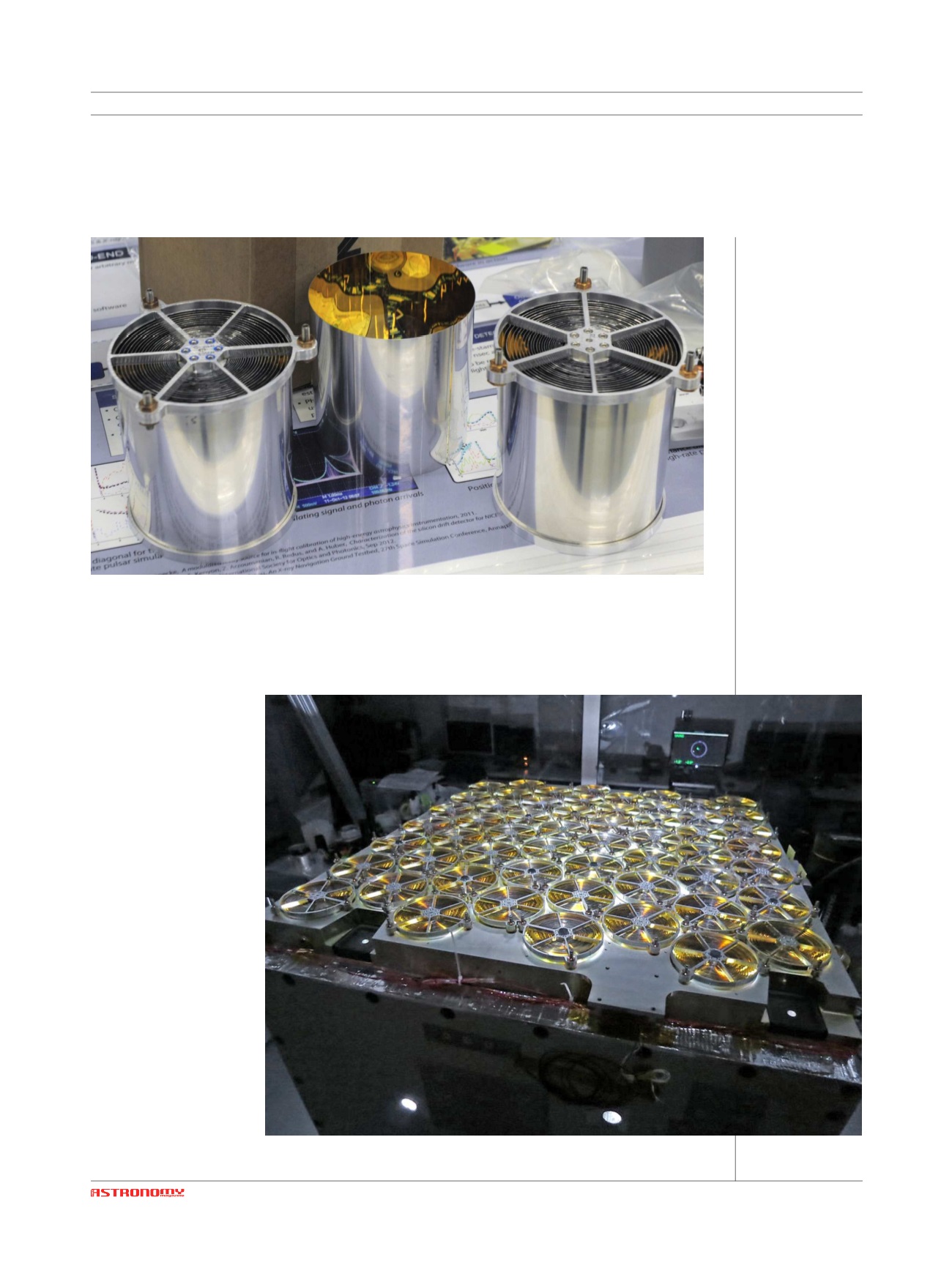

8
SEPTEMBER-OCTOBER 2017
ASTRONAUTICS
existing structures and equipment, which
significantly reduced the cost of the mis-
sion. A little larger than a dishwasher,
NICER contains the X-ray Timing Instru-
ment (XTI), an array of 56 X-ray concentra-
tors (called XRCs), connected with silicon
drift detectors (SDDs).
Every XRC collects pho-
tons on a surface of
about 50 cm
2
, from an
area of the sky 15 arc
minutes wide, and di-
verts them to the SDDs.
They register each indi-
vidual X-ray photon,
precisely measure its
energy (from the ion-
ization level produced
in the detector mate-
rial) and record its ar-
rival time just as pre-
cisely. Before looking
at why these data are
crucial to the goals of
the study of neutron
stars, let’s make a quick
digression about X-ray
concentrators so that
we understand in broad
outline how they work.
For all practical pur-
poses, these tools are
mirror telescopes, but since X-ray photons
have very high frequencies and thus a
high penetrating power, common reflect-
ing mirrors cannot be used to deflect
them towards the focal plane; instead of
reflecting off the surfaces of those mir-
L
eft and below,
work in pro-
gress on single X-
ray concentrators
and the NICER
concentrator
plate. [NASA]
















